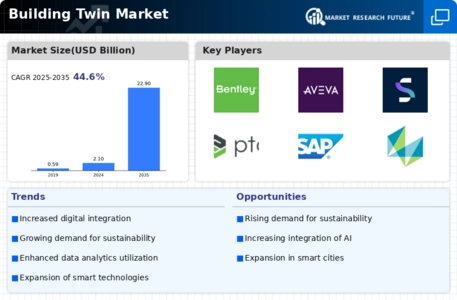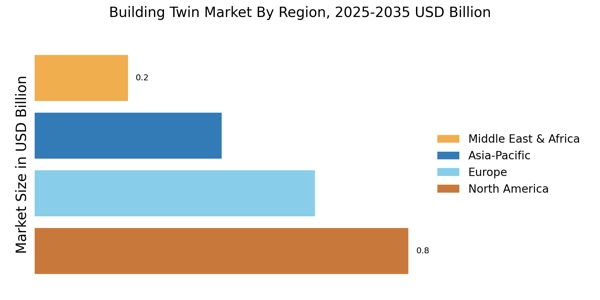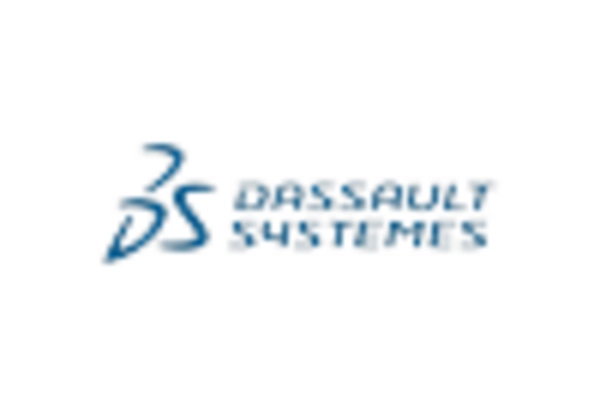Emphasis on Sustainability
Sustainability has emerged as a critical driver within the Building Twin Market, as stakeholders increasingly prioritize eco-friendly practices. The construction and operation of buildings account for a significant portion of global carbon emissions, prompting a shift towards sustainable design and management. Building twins enable more efficient resource utilization, allowing for better energy management and waste reduction. According to recent data, buildings utilizing digital twins can achieve energy savings of up to 20%. This focus on sustainability not only aligns with regulatory requirements but also meets the growing consumer demand for environmentally responsible solutions, thereby propelling the market forward.
Regulatory Compliance and Standards
The Building Twin Market is significantly influenced by the evolving landscape of regulatory compliance and standards. Governments and regulatory bodies are increasingly mandating the adoption of digital technologies in construction and building management to enhance safety, efficiency, and sustainability. For example, regulations may require the implementation of building information modeling (BIM) and digital twin technologies to ensure compliance with safety standards. This regulatory push is likely to drive the adoption of building twins, as organizations seek to align with these requirements while also improving operational efficiencies. Consequently, the market is expected to expand as more entities recognize the necessity of compliance in their strategic planning.
Integration of Advanced Technologies
The Building Twin Market is experiencing a notable shift towards the integration of advanced technologies such as artificial intelligence and the Internet of Things. These technologies facilitate real-time data collection and analysis, enabling stakeholders to optimize building performance and maintenance. For instance, the use of AI algorithms can predict maintenance needs, thereby reducing operational costs by up to 30%. Furthermore, the incorporation of IoT devices allows for seamless communication between various building systems, enhancing energy efficiency and occupant comfort. As a result, the demand for building twins, which serve as digital replicas of physical structures, is likely to surge, reflecting a broader trend towards smart building solutions.
Enhanced Collaboration Among Stakeholders
Collaboration among stakeholders is increasingly recognized as a vital driver within the Building Twin Market. The complexity of modern construction projects necessitates effective communication and cooperation among architects, engineers, contractors, and facility managers. Building twins facilitate this collaboration by providing a shared digital platform that enhances transparency and information sharing. This collaborative approach can lead to improved project outcomes, reduced costs, and shorter timelines. As organizations strive for greater efficiency and effectiveness in their operations, the demand for building twins is likely to rise, reflecting the importance of teamwork in achieving successful building management.
Increased Investment in Smart Infrastructure
Investment in smart infrastructure is a pivotal driver for the Building Twin Market, as cities and organizations seek to modernize their facilities. The trend towards smart cities, characterized by interconnected systems and data-driven decision-making, is fostering a greater demand for building twins. Recent estimates suggest that investments in smart infrastructure could reach trillions of dollars over the next decade. Building twins play a crucial role in this transformation, providing a framework for integrating various building systems and enhancing overall functionality. As stakeholders recognize the value of data-driven insights, the market for building twins is poised for substantial growth.

















Leave a Comment